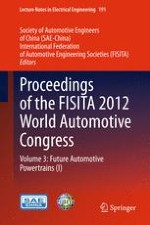2013 | OriginalPaper | Buchkapitel
Well-to-Wheel Analyses for Energy Consumption and Greenhouse Gas Emissions of Electric Vehicles Using Various Thermal Power Generation Technologies in China
verfasst von : Wei Shen, Weijian Han
Erschienen in: Proceedings of the FISITA 2012 World Automotive Congress
Verlag: Springer Berlin Heidelberg
Aktivieren Sie unsere intelligente Suche, um passende Fachinhalte oder Patente zu finden.
Wählen Sie Textabschnitte aus um mit Künstlicher Intelligenz passenden Patente zu finden. powered by
Markieren Sie Textabschnitte, um KI-gestützt weitere passende Inhalte zu finden. powered by
